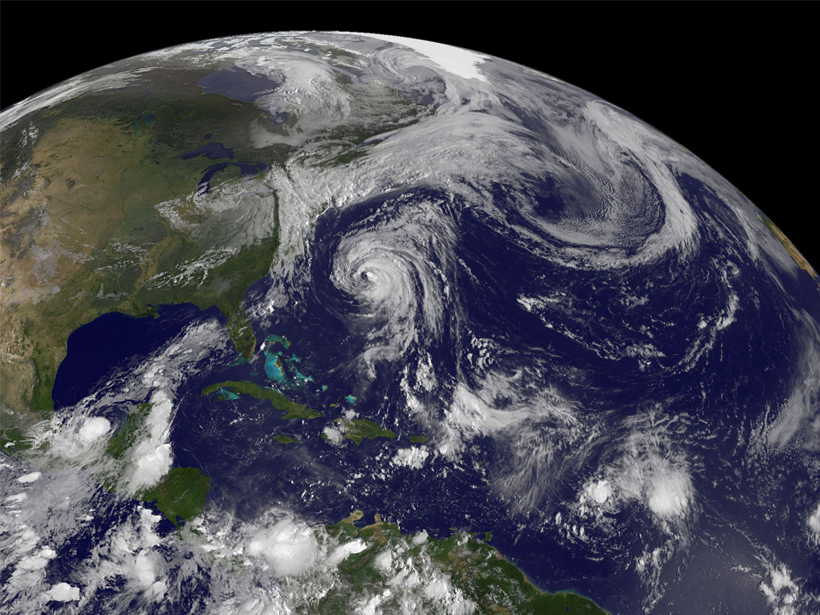Source: Geophysical Research Letters
Volcanic eruptions can cause numerous problems, from lava flows and lahars to billowing clouds of volcanic ash and volatiles that can alter the Earth’s climate. But there’s one consequence of lower-latitude volcanic eruptions that people might view as beneficial: fewer tropical cyclones.
When a volcano erupts, it releases sulfate aerosols into the atmosphere. These fine sulfate particles (or droplets of sulfate solutions) absorb and scatter solar radiation in the Earth’s stratosphere. When an eruption occurs in the lower latitudes, this scattering of radiation reduces the sea surface temperature—which is one of the mechanisms that control tropical cyclone formation. This could reduce the frequency of tropical cyclones in the North Atlantic basin.
Volcanic eruptions at higher latitudes also release sulfate aerosols into the atmosphere, but it is still unclear whether they have the same potential to reduce cyclone frequency as low-latitude eruptions.
Guevara-Murua et al. gathered historical eruption and cyclone data over the past 300 years to put this volcano-cyclone relationship to the test. The researchers classified eruptions on the basis of their magnitude, latitude, and the thickness of the aerosol layer that they emitted. In total, they identified 25 volcanic eruptions that met their criteria. These 25 eruptions were then divided on the basis of their latitudes—one group for eruptions between 20°N and 20°S and one for eruptions north of 40°N. One final category consisted of the strongest volcanic eruptions from low latitudes. The researchers then compared these categorized eruptions with two tropical cyclone databases: a record of cyclones since 1851 and a reconstruction of the annual number of tropical cyclones that passed near the Lesser Antilles since 1690.
The researchers found that there were reductions in the number of tropical cyclones in the 3 years following major volcanic eruptions from both low latitudes and northern high latitudes. This reduction ranged from one to more than three fewer cyclones per year. Understanding why the frequency of tropical cyclone formation decreases in the North Atlantic basin following high-latitude eruptions requires further research, including better identification of these events. (Geophysical Research Letters, doi:10.1002/2015GL066154, 2015)
—Cody Sullivan, Writer Intern
Citation: Sullivan, C. (2016), Fewer tropical cyclones form after volcanic eruptions, Eos, 97, doi:10.1029/2016EO046551. Published on 24 February 2016.
Text © 2016. The authors. CC BY-NC 3.0
Except where otherwise noted, images are subject to copyright. Any reuse without express permission from the copyright owner is prohibited.

